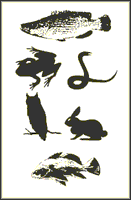Nebraska Cooperative Fish and Wildlife Research Unit

Nebraska Cooperative Fish and Wildlife Research Unit: Staff Publications
Date of this Version
2001
Abstract
The Schaus swallowtail, Papilio aristodemus ponceanus , historically occurred in tropical hardwood hammocks from South Miami to the upper Florida Keys and is currently listed as federally endangered. Much of the remaining hardwood hammock habitat is fragmented by roads and human development that may alter the microhabitat within the hammocks and increase the probability of invasion by non-native predators and competitors. One non-indigenous species that has recently invaded the Florida Keys, and that may impact the Schaus swallowtail is the red imported fire ant ( Solenopsis invicta Buren). We estimated abundance of red imported fire ants in Schaus swallowtail habitat on Key Largo, and the decrease in red imported fire ants resulting from the application of chemical ant baits. In addition, we conducted laboratory experiments to determine how vulnerable swallowtail life stages are to red imported fire ant predation. We found red imported fire ants at 50% of transects in the hardwood hammock, up to 40 m from hammock edge. Chemical treatments were only partially effective in decreasing red imported fire ant abundance, and the effect was short-lived. All immature swallowtail life stages were vulnerable to predation by red imported fire ants. Habitat restoration that decreases red imported fire ant abundance may be the most costeffective and long-term method of decreasing impacts from red imported fire ants.


Comments
Published in Florida Entomologist 84(2) 254-258 (2001)